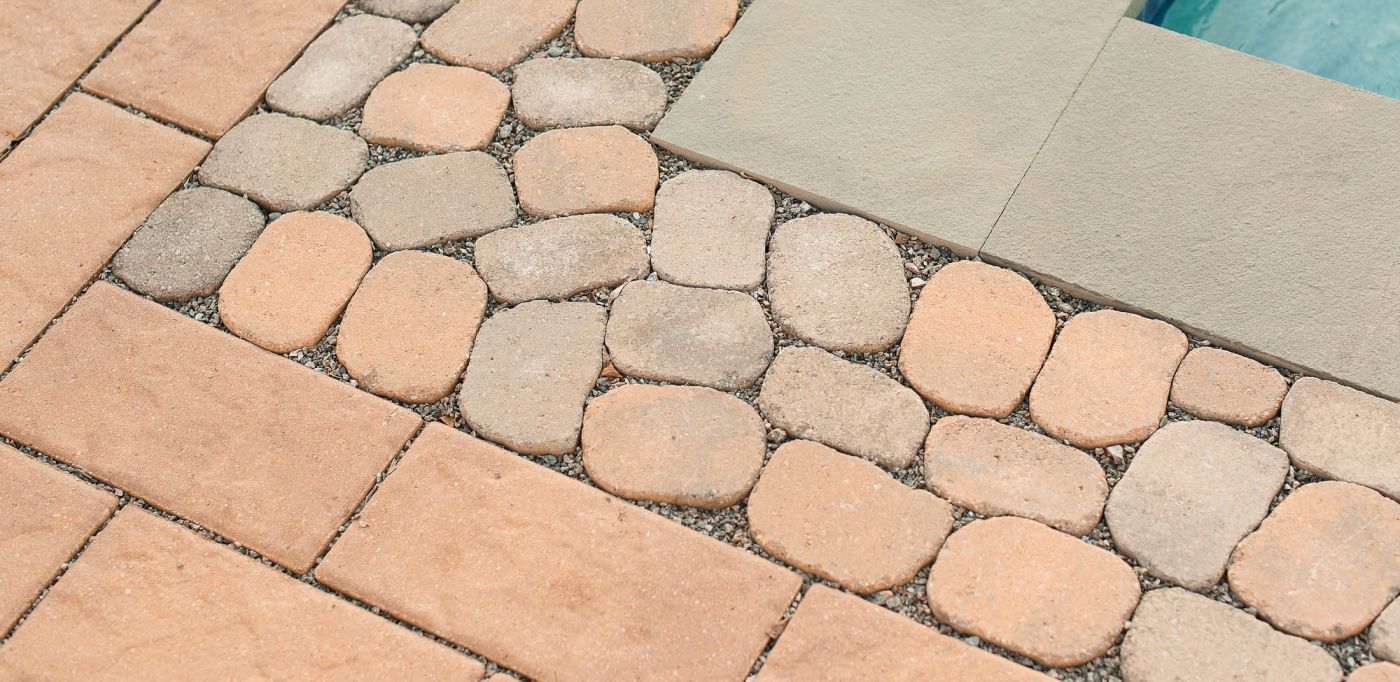Inspiration
The Benefits of Permeable Pavers

Story Highlights
Permeable paver systems have grown in popularity as municipalities and homeowners begin to understand the environmental impact of the widespread impermeable surfaces of urban areas. In this article, we outline the importance and benefits of permeable paver systems.
Understanding the Problem
Urbanization has had an increasingly negative impact on the quantity and quality of runoff water entering municipal networks and waterways.
By replacing natural land covers (like grasslands and forests) with impervious surfaces (like parking lots, streets, roofs, driveways, patios, etc.), the natural water-retaining role of soil and vegetation has been lost. Increased runoff from impervious surfaces is causing dangerous floods, severe erosion damage to stream channels, diminished recharge of groundwater, and the degraded habitats of water bodies.
Impervious surfaces also introduce countless pollutants (suspended solids, exhaust, fertilizers, pesticides, heavy metals, and other contaminants) into runoff water. These pollutants increase wastewater treatment costs and further the damage of waterway habitats.

A sustainable solution
How Permeable Pavers Work
Permeable pavement systems are meant to mimic the natural filtration process that occurs in soils. Through this process, pollutants are filtered out and water is allowed to naturally migrate into the water table.
As illustrated in the diagram, water enters through the permeable joints between the pavers. The base/subbase structure consists of two to three layers of washed, angular, open-graded stone that can collect and store water. The water filters through these layers and is then allowed to seep into the ground.
In areas where soil permeability is poor, perforated drain pipes are often installed to collect and drain excess water, preventing an overflow.
Benefits of Permeable Pavers
permeable paving provides numerous benefits to the environment, Community, & Individual Homeowners.

Reduction of surface runoff
Filtration of pollutants such as suspended solids, exhaust, fertilizers, pesticides, heavy metals, and other contaminants
Recharge of the groundwater table.
Reduction of erosion and flooding risks associated with high runoff volumes.

Reduces wastewater treatment costs.
Reduces the construction of infrastructure to collect and manage stormwater, such as retention basins.
Reduces peak flow (discharge to sewer is spread over a longer period)
Reduces network overload of the wastewater treatment infrastructure.

Minimal puddling since the water does not accumulate on the surface.
Less ice formation in the winter as melting snow immediately infiltrates the soil.
Gain credits for LEED certification, depending on the locality.
Increases the value of the home, especially as localities begin to legislate and regulate residential pavements.
Cascading Curves - A Case Study
Cascading Curves - A Case Study
This homeowner approached Outdoor Dreams while relocating from Hawaii into their newly built custom home. With a fresh start in Virginia, they envisioned a poolscape that would feel both welcoming and grounded—a space that blended seamlessly with the architecture of their home while also reflecting the rustic, natural warmth of the Midwest.
Sculpting Fire - Custom Curved Fire Features
Sculpting Fire - Custom Curved Fire Features
When it comes to building a luxury poolscape, a swimming pool is just the beginning. The real magic happens in the details—the elements that transform a backyard into an unforgettable retreat. For the Cascading Curves Project, that magic came in the form of two fully customized, curve-driven fire features that now anchor the space with drama, warmth, and unmistakable personality.